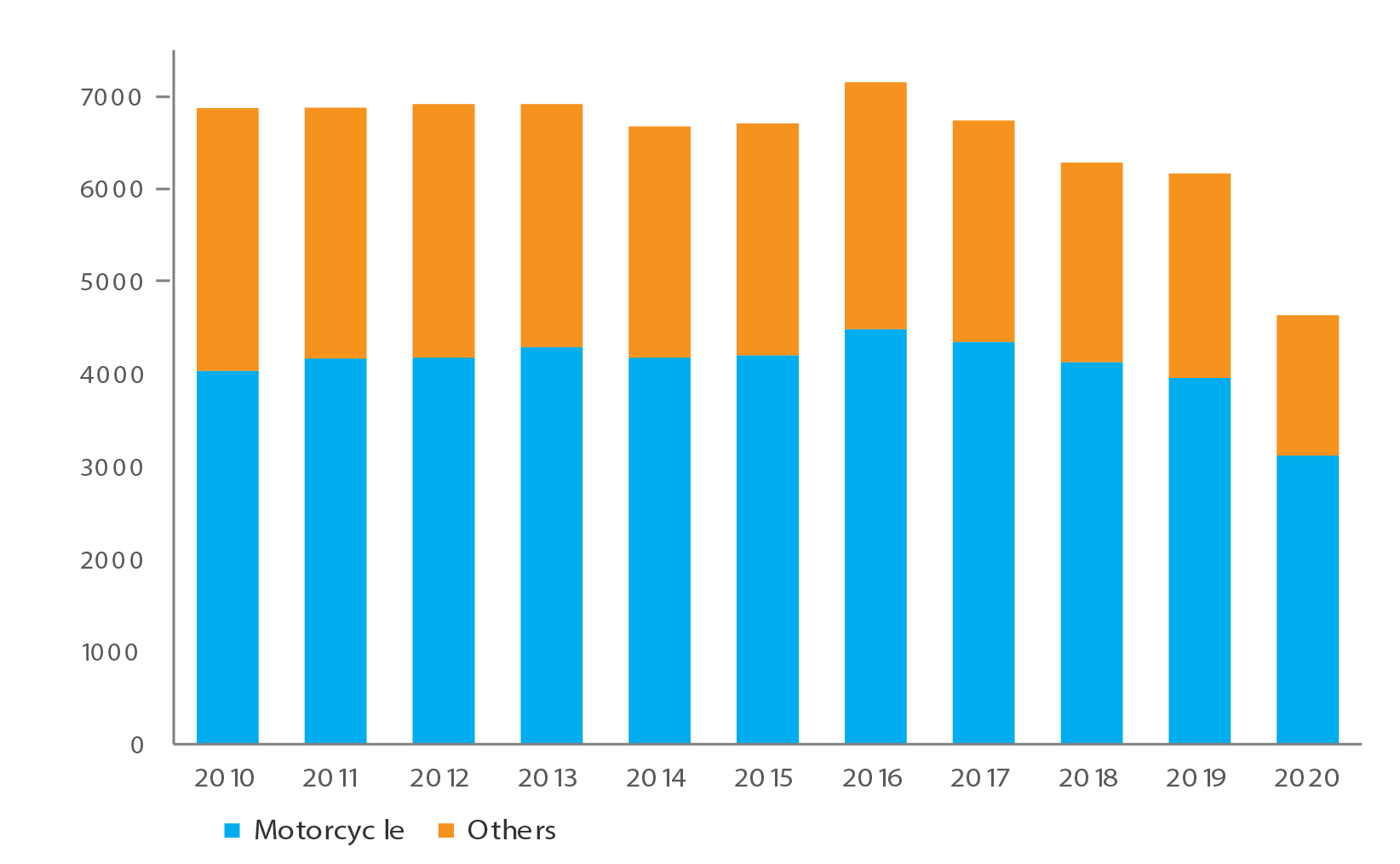Background
The New Car Assessment Program has been the gold standard for evaluating vehicles’ safety aspects. First created in 1979 by the United States National Highway Traffic Safety Administration, its success at reducing crash fatality and injuries by encouraging better safety design and customer awareness [1] led to its widespread adoption to other countries, like the European Union Countries (Euro NCAP), Australia and New Zealand Australasian ANCAP, and Japan with JNCAP. Malaysian Institute of Road Safety (MIROS) pushed for a similar program catering for the South-East Asian market, first with the locally focused Malaysian Vehicle Assessment Program (MyVAP), culminating in the formation of ASEAN NCAP in 2011.
Nowadays, thanks to the program’s attentive focus on the performance of vehicular safety technologies as well as improved consumer information schemes, most vehicles that enter the ASEAN market have achieved at least four stars rating out of five [2]. However, the majority of NCAP around the world so far only focusing on improving the safety of passenger cars, while most road fatalities and injuries actually occur among motorcyclists, especially in South-East Asian countries. Worldwide, powered two-wheeler (PTW) deaths account for 23% to 28% of all road fatalities between 2013 and 2016 [3]. Southeast Asian countries contributed the most to PTW fatalities compared to other countries with 43% death – whereas, in Malaysia, 62.7% of road deaths were among motorcycle users [4]. The following figure shows the trend for road traffic fatalities in Malaysia for the past 10 years in which more than half of the fatalities were motorcyclists.
MALAYSIA ROAD TRAFFIC FATALITIES 2009-2020

There are many reasons why there is yet specific vehicle assessment program such as NCAP for motorcycles, chief among them being that it is primarily a crash test-driven program. This destructive method of testing is suitable for larger vehicles that protect passengers within their cabin structure, allowing features of the structure itself to play a part in mitigating crash injuries alongside other passive and active systems. Whereas a motorcycle rider is not secured to the bike and is likely thrown from the vehicle in a crash, thus the structural integrity of a motorcycle will not benefit the rider. Instead, a safety rating for motorcycles should emphasize more on other crash prevention features.
There is currently no systematic rating system for motorcycle safety in the world that assesses using scientifically rigorous methodologies. At most, there is only consumer reporting on user satisfaction [5], which is understandably subjective and may not accurately reflect its actual safety aspects. There are however scientific tests for motorcycle safety equipment, such as helmets [6],[7] and riding jackets [8],[9].
Thus, equipped with the experience of establishing MyVAP and subsequently ASEAN NCAP, MIROS together with the Malaysia Automotive, Robotics and IoT Institute (MARii) set forth to formulate a suitable rating system for motorcycles, resulting in the launch of the Malaysia Motorcycle Assessment Program (MyMAP). The program aimed to provide motorcycle ratings for motorcyclist to choose the right motorcycle with safer technology and protection for their ride.
- Kahane, C. J. (2015). Lives saved by vehicle safety technologies and associated Federal Motor Vehicle Safety Standards, 1960 to 2012 – Passenger Cars and LTVs. In 24th International Technical Conference on the Enhanced Safety of Vehicles (ESV), NHTSA.
- Abu Kassim, K. A., Ahmad, Y., Jawi, Z. M., & Ishak, S. Z. (2019). ASEAN NCAP’s success and challenges in promoting safer vehicles in the ESCAP Region. Transport and Communications Bulletin for Asia and the Pacific, 89, 1-15.
- WHO (2015). Global status report on road safety 2015. World Health Organization.
- PDRM (2017). Statistik Kemalangan Jalan Raya. Royal Malaysia Police.
- Charles, F. (2016). Consumer Reports will continue controversial motorcycle ratings. Retrieved from https://www.latimes.com.
- Department of Transport (n.d.). SHARP, The Helmet Safety Scheme. Retrieved from https://sharp.dft.gov.uk.
- Transport for NSW (n.d.). What is crash? Retrieved from https://crash.org.au/what-is-crash.html
- MotoCAP (n.d.). Safety ratings, choose the right gear for your ride. Retrieved from https://www.motocap.com.au
- Transport Accident Commission (2018). World first ratings system for motorcycle clothing launched. Retrieved from https://www.tac.vic.gov.au
